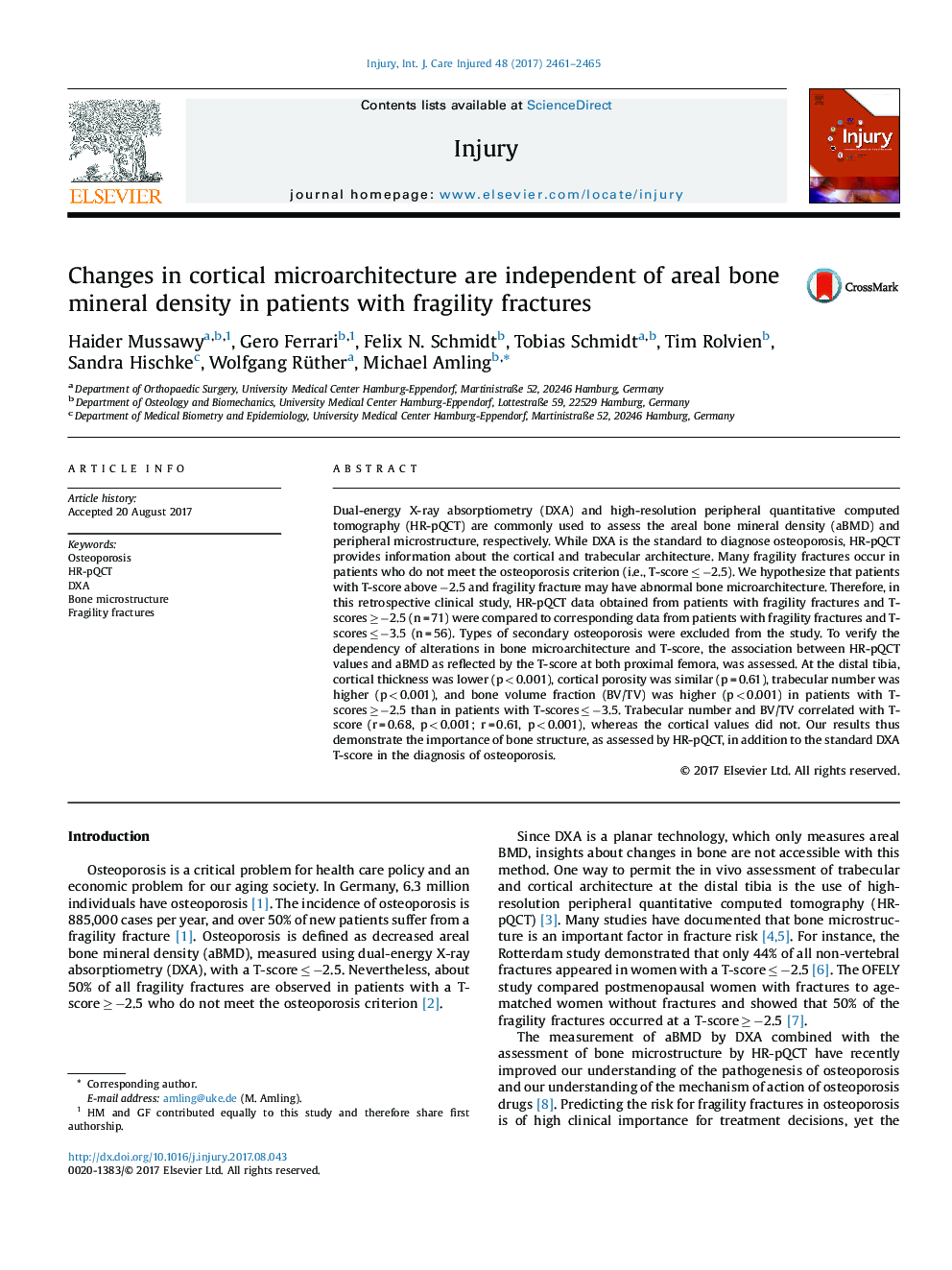| Article ID | Journal | Published Year | Pages | File Type |
|---|---|---|---|---|
| 8719008 | Injury | 2017 | 5 Pages |
Abstract
Dual-energy X-ray absorptiometry (DXA) and high-resolution peripheral quantitative computed tomography (HR-pQCT) are commonly used to assess the areal bone mineral density (aBMD) and peripheral microstructure, respectively. While DXA is the standard to diagnose osteoporosis, HR-pQCT provides information about the cortical and trabecular architecture. Many fragility fractures occur in patients who do not meet the osteoporosis criterion (i.e., T-score â¤Â â2.5). We hypothesize that patients with T-score above â2.5 and fragility fracture may have abnormal bone microarchitecture. Therefore, in this retrospective clinical study, HR-pQCT data obtained from patients with fragility fractures and T-scores â¥Â â2.5 (n = 71) were compared to corresponding data from patients with fragility fractures and T-scores â¤Â â3.5 (n = 56). Types of secondary osteoporosis were excluded from the study. To verify the dependency of alterations in bone microarchitecture and T-score, the association between HR-pQCT values and aBMD as reflected by the T-score at both proximal femora, was assessed. At the distal tibia, cortical thickness was lower (p < 0.001), cortical porosity was similar (p = 0.61), trabecular number was higher (p < 0.001), and bone volume fraction (BV/TV) was higher (p < 0.001) in patients with T-scores â¥Â â2.5 than in patients with T-scores â¤Â â3.5. Trabecular number and BV/TV correlated with T-score (r = 0.68, p < 0.001; r = 0.61, p < 0.001), whereas the cortical values did not. Our results thus demonstrate the importance of bone structure, as assessed by HR-pQCT, in addition to the standard DXA T-score in the diagnosis of osteoporosis.
Related Topics
Health Sciences
Medicine and Dentistry
Emergency Medicine
Authors
Haider Mussawy, Gero Ferrari, Felix N. Schmidt, Tobias Schmidt, Tim Rolvien, Sandra Hischke, Wolfgang Rüther, Michael Amling,
